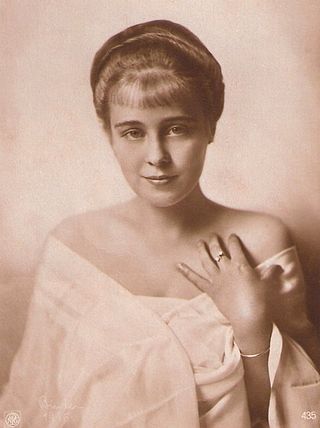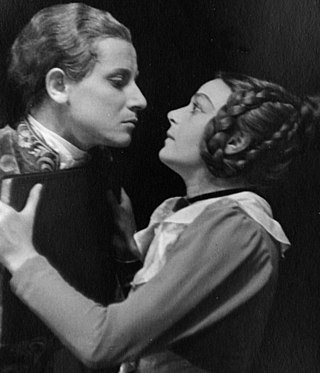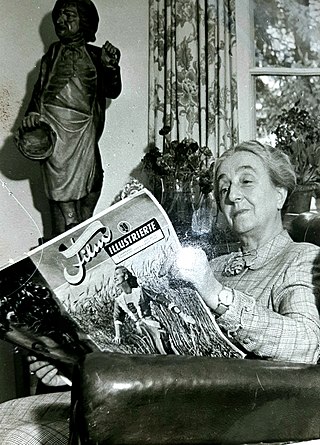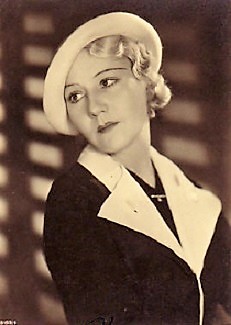Oskar Sima was an Austrian actor who is best remembered for appearing in supporting roles in countless comedy films from the 1930s to the 1960s.

Helen Rose was an American costume designer and clothing designer who spent the bulk of her career with Metro-Goldwyn-Mayer.
Günther Anders was a German cameraman and cinematographer.

Jack Mower was an American film actor. He appeared in more than 520 films between 1914 and 1965. He was born in Honolulu and died in Hollywood.

Käthe Haack was a German stage and film actress. She appeared in more than 200 films and 30 television productions between 1915 and 1985.

Stanley Price was an American film supporting actor who appeared in over 200 films between 1922 and 1956. He was a charter member of the Screen Actors Guild.
Alice Martha Treff was a German film actress. She appeared in more than 120 films between 1932 and 2001. She was born and died in Berlin, Germany.

Albert Eugen Rollomann, better known as Dieter Borsche, was a German actor. He appeared in more than 90 films between 1935 and 1981. Since 1944, he suffered from muscle atrophy and had to use a wheelchair since the late 1970s. He was born in Hanover, Germany and died in Nuremberg, Germany. Borsche became a film star after World War II following his performance in Keepers of the Night (1949).
Ingrid Andree is a German actress. She began her career in 1948 in Hamburg and in 1950 appeared at the Thaliatheater, Hamburg. She has made many stage appearances and also appeared in more than 50 films and television shows since 1951. She starred in the film The Rest Is Silence, which was entered into the 9th Berlin International Film Festival.
Albert Peter Adam Florath was a German stage and film actor.
Operetta films are a genre of musical films associated with, but not exclusive to, German language cinema. The genre began in the late 1920s, but its roots stretch back into the tradition of nineteenth century Viennese operettas.
Hans Stiebner was a German actor.
Ernst Waldow was a German film actor. He appeared in more than 160 films during his career.
Harry C. Neumann of Chicago, Illinois, was a Hollywood cinematographer whose career spanned over forty years, including work on some 350 productions in a wide variety of genres, with much of his work being in Westerns, and gangster films.

Margarete Haagen was a German stage and film actress. Haagen appeared in over a hundred films during her career, generally in character roles. She specialised in playing good-natured elderly ladies. Following the Second World War, she appeared in several rubble films, such as In Those Days (1947). During the 1950s, she often appeared in heimatfilm and costume films.
Walter Wischniewsky was a German film editor who worked on over a hundred productions during his career. Wischniewsky also sometimes worked as an assistant director. Wischniewsky began his career during the Nazi era, but most productions he worked on were post-Second World War. He edited several rubble films, including The Berliner (1948). During the 1950s and 1960s he became one of the mainstays of German commercial cinema, working on the long-running Edgar Wallace and Karl May series. Wischniewsky edited Fritz Lang's Indian-shot The Indian Tomb and The Tiger of Eschnapur.

Erika von Thellmann (1902–1988) was an Austrian actress who appeared in more than a hundred films and television series during her career.
Ernst H. Albrecht (1906–1982) was a German art director. He worked on the sets of over eighty films during his career. He was employed mainly in Germany, but also worked on the Austrian film The Blue Star of the South in 1951.
Mathias Matthies was a German art director. He designed the sets for around a hundred films and television programmes. He often collaborated with his wife Ellen Schmidt, including on some Edgar Wallace adaptations made by Rialto Film.
The Monarch Film Corporation was a British film distribution company active during the 1940s and 1950s. It specialised in supplying second features to British cinemas. The company handled a mixture of British and American films, as well as the Australian film Strong Is the Seed. It involved itself in production at times, and produced several more ambitious features including Hindle Wakes (1952) and A Yank in Ermine (1956). It had an arrangement with ACT Films under John Croydon to handle films made at Walton Studios. The 1952 adventure film Men Against the Sun (1952) was, unusually for the second feature market, a costume adventure film despite its running time.






